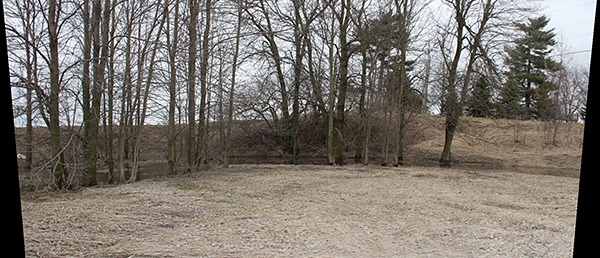First entrenchment
Battle of the Châteauguay National Historic Site
Behind the abatis, about 1500 men were part of the reserve, the majority of whom were gathered behind four defensive lines made up of natural gullies. These entrenchments on the north shore allowed reinforcements to be sent quickly to the south shore, which was heavily wooded and partially marshy.
Lieutenant Colonel George Richard John Macdonell (nicknamed Red George), commanded the reserve troops.
The map at the bottom of the sign will enable you to better visualize all of the Canadian defensive positions. The first entrenchment is located about 3.2 km from the firing line. It brought together troops of Voltigeurs, Sedentary Militia, and Selected Embodied Militia.
The Canadian Voltigeurs were voluntary militia who were enlisted for the duration of the conflict. Soldiers from the Selected Embodied Militia were conscripted and enlisted by contract for a period of two years. Their names were chosen by the drawing of lots. The Voltigeurs wore a grey uniform and a bearskin shako (hat) while the Selected Embodied Militia had a red jacket and blue pants. A shako with a plume completed their uniform.
To learn more, discover people of historical significance.
It is said that while waiting for the American attack, the Canadians began to fortify their positions by placing trees and building entrenchments.
“[Translation] Seeing that the enemy was not advancing, we began to fortify our position with trees and to create entrenchment spaces; we spent three days and three nights behind these entrenchments watching the enemy. About half a league higher than us, there was a wooded point leading to the river; only the road crossed it. There, Colonel de Salaberry had an abatis built, which our pickets guarded afterwards and where the battle took place [...].” (V. J. H. Suthren, The Battle of the Châteauguay, 1980)
Today, it may be difficult to identify the natural ravines from among those that have been artificially made or added with the aim of better draining agricultural lands.

Overview of the first entrenchment
- Date modified :